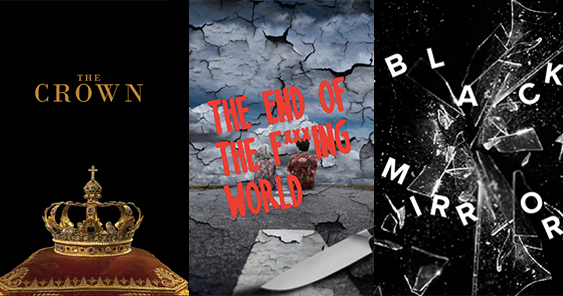In the era of streaming television, no single platform has offered an easier way to watch your favorite shows—including exclusive properties—than Netflix. It has become a genre unto itself, with the platform’s series earning much attention and critical praise. Even traditional TV networks are following its lead by releasing all new episodes of a series at the same time—a step to win over binge viewers who do not want to wait a week for the next installment. Moreover, Netflix has made it so easy to watch your favorite content from an underseen gem to a ratings juggernaut to an Emmy favorite, that the internet entertainment company has invented a whole new term for television on its own: the binge watch.
The rise of Netflix allowed consumers to say goodbye to renting or buying DVDs. Now, all one has to do is allocate time to watch their shows, grab their favorite snack, and binge-watch for hours until one is satisfied. With hundreds of shows getting featured on Netflix, it seems that the entertainment company has not left any genre untouched, making it hard for people to distinguish the good from the great.
The choice on Netflix is one of its strongest appeals and sometimes it is just impossible to find the perfect series to watch. So, to help you in finding the most binge-worthy shows in this time of peak TV, here is a list of the three best series to watch on Netflix right now:
The Crown
The success of Netflix’s The Crown lies, in part, in its ornate costumes and elaborate and realistic set design—the palaces, castles, and rolling European landscapes. The viewers definitely expect nothing less from a series that reportedly took a record-breaking $130 million to produce. It was visually stunning yet rooted in the story of this one privileged but beleaguered young woman becoming Queen and learning to cope with the burden.
What kept the engine of The Crown going in Season 1 was its simplicity—it was an origin story about a long-reigning monarch. Any historical TV show is bound to make choices about which events and themes are most important. But the show’s approach is particularly noteworthy because it reflects the 21st-century expectations about women in leadership positions. Contemporary audiences assume that a young woman in power—regardless of the era in which she rules—would necessarily be filled with self-doubt and be forced to spend much of her time winning over skeptical men. The Crown follow these tropes accordingly. But in truth, Elizabeth II was a confident young queen, raised with a keen awareness of her future responsibilities.
Created and principally written by Peter Morgan, The Crown is like all historical dramas—shaped by the circumstances of the era they were made as well as the time periods portrayed on screen. The show clearly depicts the present-day challenges faced by women in political life. With any luck, as more women achieve political office over the course of the 21st century, their counterparts in historical dramas will be depicted with greater confidence in their abilities as leaders.
The End of the F***ing World
The title does make it clear, The End of the F***ing World is a very dark show. But more than the nasty graphic scenes, what hits you hard is the pitch-black humor. “I’m James,” a skinny British adolescent kid announced. “I’m 17, and I’m pretty sure I’m a psychopath.” So begins The End of the F***ing World, an adaptation of the popular Charles Forsman graphic novel and the first great hidden TV gem of 2018. The premise is simple: Two messed-up teenagers—James and Alyssa—bond over their frustrated familial lives. One is an apparent psychopath ready to progress from murdering animals, and the second suffers from an abusive relationship with her stepfather.
Written by Charlie Covell and directed by Jonathan Entwistle, The End of the F***ing World consists of eight almost-twenty-minute long episodes. The duo takes turns narrating the story, which gives the viewers an insight into their perspectives, juxtaposing their outer selves with their inner monologues. The comedic editing contrasts the show’s darker elements, but the two opposites are able to work seamlessly throughout the series.
This original Netflix show proves that great stories not only provide the desire for a continuation, but they leave an immediate impact that isn’t lessened by a halting of the story. It’s probably why the viewers hypothesize the various ways the two lead characters of the show make it out happily ever after. A perfect representation of this refusal to fade away and stagnate so many franchises today can be seen in the beginning of the series’ sixth episode, wherein the two lead characters have no choice but to listen to The Spencer Davis Group’s “Keep on Running” in a car they have just stolen. It is almost as if the song was purposefully chosen to fit the themes of the show. Though the show takes place in modern-day England, most of the songs from the soundtrack are old American country, blues and Motown hits, as well as songs written just for the show by Blur’s Graham Coxon. The music is part of what makes the show setting and time period feel a little ambiguous, which is what the creators intended.
If this was the ‘90s, The End of the F***ing World would be a hip indie movie making major waves at Sundance, getting instantly scooped up by Miramax for millions, and setting up its directors for a solid decade of impressive work, with probably a failed dalliance or two with the mainstream. But this is 2018, and for The End of the F***ing World’s unabashed celebration of those kinds of ‘90s movies to work, it has to also offer something new and relevant to the mix—the way it derails what could have easily been a trite young adult romance into a poignant tragedy that uniquely spins the coming-of-age formula on its head.
Black Mirror
Black Mirror is the creation of Charlie Brooker, a figure formerly best known for his satirical journalism and biting assessments of popular culture. Appearing on BBC’s Desert Island Discs radio program, he recounted how he spent years screaming at the television: “I could do better than that!” And with Black Mirror, he probably has. Inspired by The Twilight Zone, Brooker has described the series as having the unique combination of “satire, technology, absurdity, and a pinch of surprise.”
This Netflix series, which debuted in 2011, is a supreme example of contemporary television fantasy. It is hard to think of any other modern show that is so constantly unpredictable, aesthetically accomplished, stylistically eclectic or downright disturbing. Just as the pioneering science fiction of the 19th century incorporated the scientific discoveries and technology of the industrial revolution, so Black Mirror pushes our contemporary experience of the digital revolution into possible projections of the future.
Black Mirror is not just about technology. Through its thematic backdrop, it tries to “mirror” back the realities of today’s society in a larger sense. One example of this is the first show of the series, “The National Anthem.” In this episode, a person or entity using basic, contemporary technology holds a British princess hostage, and the prime minister is forced to copulate with a pig on live TV as a ransom. As 2017 saw a world of crypto currencies and ransomware used to hold government-run health institutions hostage, it is as if the creators knew that the increase in ransomware would make it necessary for an over-the-top corporeal ending to be written just so that the show would have some chance of holding up over time.
Another example is the episode titled “USS Callister.” This episode is so striking in its ability to see the future not because of the technology on display, but because it builds a social world that was all too real when it aired at the end of 2017. By basing the episode on futuristic versions of VR, gene sequencing, and cloning, the writers of “USS Callister” stick to a familiar toolkit for the series by giving viewers a vision of tech they have now, but that has been improved, and placed in a world that is familiar to them. It demonstrates a tech culture in which men harass women and bully other men. In this instance, the bully becomes the real monster, which both shows the effect of toxic masculinity on other men and allows for the bully and harasser to be given a sympathetic story that forgives his transgressions.
With Black Mirror’s ability to predict these uprising issues based on human nature and current trends in tech usage, it reminds us that technology probably won’t enslave us, but it definitely will change us.
This article was published in the adobo magazine Trends 2018 issue.







